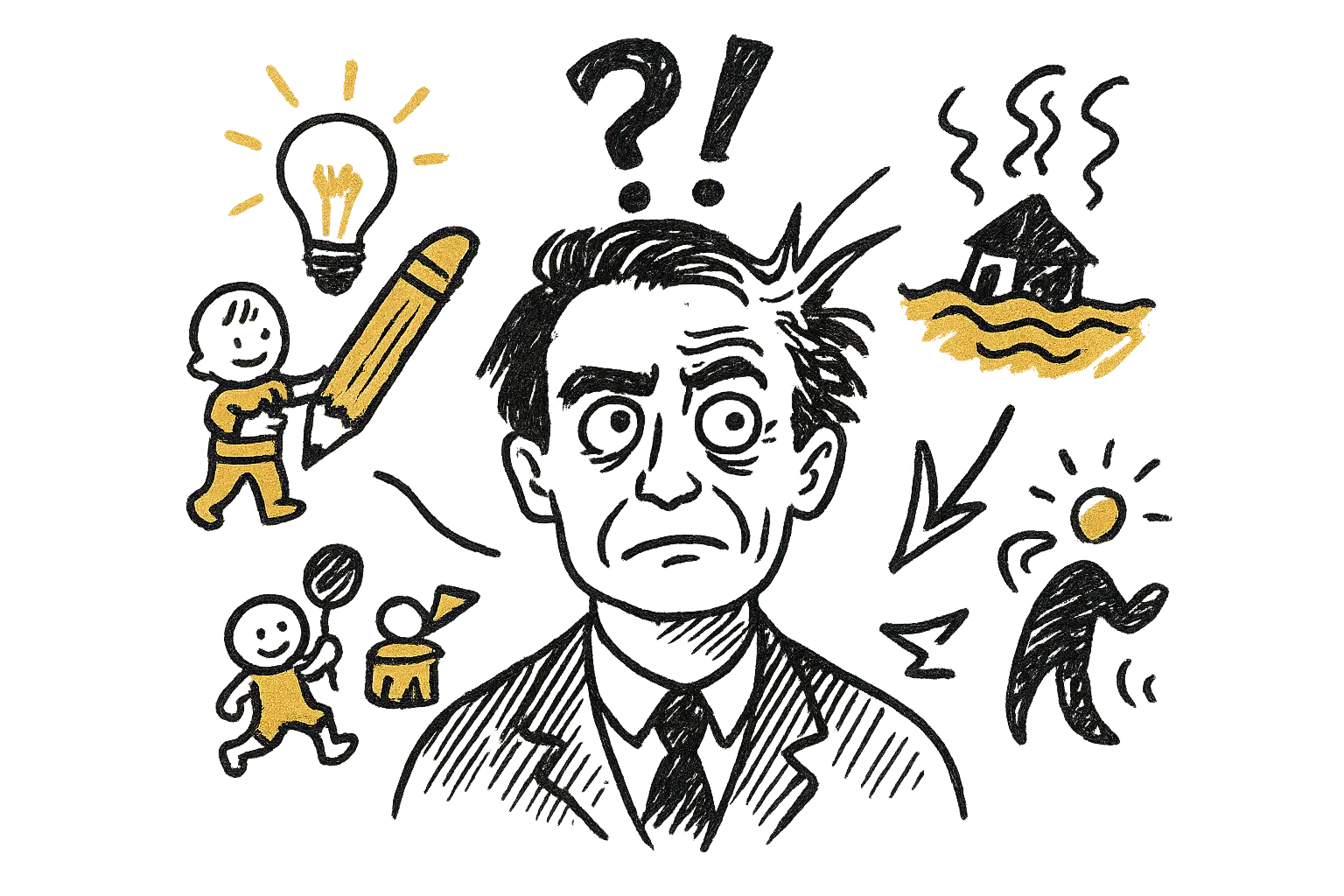Rudolf Steiner: Batshit and Brilliance

Rudolf Steiner is the reason Waldorf schools exist—those classrooms where children finger-knit before they touch an iPad, learn through rhythm, and cradle beeswax crayons like sacred tools. He influenced early childhood education profoundly. And he also believed Atlantis was real. Not just real, but destroyed because its citizens overused psychic powers.
That is Steiner in a nutshell: brilliance wrapped in unabashed batshit.
The Man with a Foot in Science
Steiner wasn’t just an esoteric yarnspinner. He studied mathematics, natural sciences, and philosophy, and even edited Goethe’s scientific writings, demonstrating real intellectual rigor.
Then he founded Anthroposophy, his so-called “spiritual science,” based on supersensible perception—clairvoyant insights no lab could ever replicate. He genuinely believed this was science, despite completely skipping reproducibility and falsifiability.
He knew the rules—and decided his own brand of mystical vision was the curveball.
The Batshit File
Steiner’s cosmic résumé includes:
- Atlantis. Real place. Sank not because of geography, but because of psychic overuse. Clairvoyance as a natural disaster.
- Eye color. Not genetics, but karma. Your irises as reincarnation receipts.
- Cow-horn agriculture. He instructed farmers to bury a cow horn stuffed with manure under the equinox moon, then dig it up and scatter the dirt as sacred fertilizer.
- Human evolution. He claimed early humans possessed clairvoyance, which we tragically lost along the way.
This isn’t parody. These were his lectures.
The Brilliance File
And yet—Steiner also had ideas that turned out to be uncomfortably right.
- Soil fertility. That cow-horn ritual sounds like witchcraft with livestock, but decomposition enriches soil through humic acid. Today, biodynamic farming—rooted in Steiner’s methods—covers over 250,000 hectares in 60+ countries. It’s niche, but large enough to fuel premium markets, from Napa Valley wines to biodynamic eggs, which alone were valued at USD 1.23 billion in 2024.
- Play-based learning. His conviction that children learn best through imagination, rhythm, and play? Once ridiculed as fluff. Today, it’s developmental science 101. Play scaffolds executive function. Rhythm aids memory. Imagination drives problem-solving. Waldorf teachers might call it “soul nourishment,” but the neuroscience is nodding along.
- Seasonal rhythms. His obsession with natural cycles in farming sounded mystical. Now soil microbiologists confirm microbial communities wax and wane with the seasons.
It’s like watching someone throw darts blindfolded and hit the bullseye every third shot.
The Necessary Weird
Here’s the part most critiques miss: Steiner’s mysticism wasn’t just fluff on the side. It was the delivery system.
Turn-of-the-century Europe was thick with theosophy, séances, occult movements, and reformist zeal. Intellectuals were busy blending science, philosophy, and spirituality. Steiner wasn’t unique—he was just unusually thorough.
The cosmic packaging gave ordinary ideas traction. “Compost helps your soil” sounds dull. “Bury a sacred cow horn to align with the Earth’s life force” feels profound. “Play helps children focus” is reasonable. “Play harmonizes the child’s eternal soul with the cosmos” makes parents take notice.
The brilliance spread because it was wrapped in batshit. Without the mystical aura, it might never have left the lecture hall.
Waldorf: The Beautiful, Weird Legacy
That’s why Waldorf schools still carry Steiner’s DNA. The rhythm, the reverence for play, the hands-on creativity—that’s his brilliance. The gentle anti-tech ethos and the undercurrent of cosmic purpose? That’s the weird.
Critics sometimes write Waldorf off as pseudoscience with crayons. Supporters praise it as education for the whole child. The truth is: it’s both. Waldorf thrives because the brilliance and the batshit were never fully separated.
Batshit and Brilliance, Together
So how do we hold Rudolf Steiner?
A genuine scholar who believed in clairvoyance as a research method. A mystic who never marketed knowingly—he believed in Atlantis, karma eyes, and supersensible science. A man whose legacy in schools and farms still resonates, even as parts of it read like mystical fan fiction.
His legacy isn’t “batshit or brilliance.” It’s both, inseparably entwined.
So the next time you see a five-year-old finger-knitting in a Waldorf classroom, remember: you’re not just watching a child at play. You’re also standing in Atlantis.
References
- Biodynamic Agriculture. (2024). Wikipedia.
- Growth Market Reports. (2024). Biodynamic Egg Market Size, Share, and Growth Forecast 2024–2033.
- Oaks, T. (2023). Rudolf Steiner on Atlantis.
- Waldorf Answers. (2023). Steiner on the Perishing Blonds and Karma.
- Waldorf Watch. (2023). Steiner’s “Science.”
- Staudenmaier, P. (2014). Between Occultism and Nazism: Anthroposophy and the Politics of Race in the Fascist Era. Brill Academic Publishers.
- Childs, G. (1991). Steiner Education in Theory and Practice. Floris Books.


Member discussion